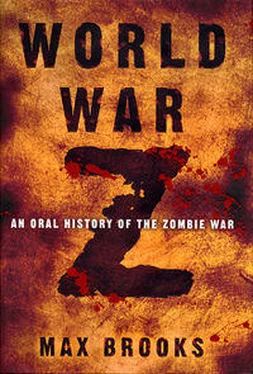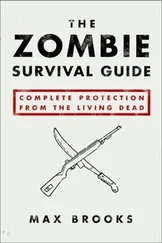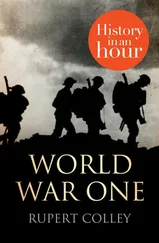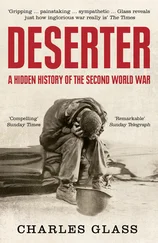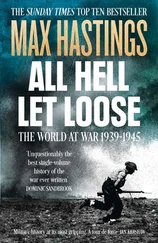Almost?
The Globemasters had to go, so did anything else powered by a “gas guzzling” jet. That left us with prop-powered aircraft. I went from flying the closest thing to an X-Wing fighter, to the next best thing to a U-Haul.
Was that the main mission of the air force?
Airborne resupply was our primary objective, the only one that really counted anymore.
[She points to a yellowed map on the wall.]
The base commander let me keep it, after what happened to me.
[The map is of the wartime continental United States. All land west of the Rockies is shadowed a light gray. Amongst this gray are a variety of colored circles.]
Islands in the Sea of Zack. Green denotes active military facilities. Some of them had been converted into refugee centers. Some were still contributing to the war effort. Some were well defended but had no strategic impact.
The Red Zones were labeled “Offensively Viable”: factories, mines, power plants. The army’d left custodial teams during the big pullback. Their job was to guard and maintain these facilities for a time when, if, we could add them to the overall war effort. The Blue Zones were civilian areas where people had managed to make a stand, carve out a little piece of real estate, and figure some way to live within its boundaries. All these zones were in need of resupply and that’s what the “Continental Airlift” was all about.
It was a massive operation, not just in terms of aircraft and fuel, but organization as well. Remaining in contact with all these islands, processing their demands, coordinating with DeStRes, then trying to procure and prioritize all the materiel for each drop made it the statistically largest undertaking in air force history.
We tried to stay away from consumables, things like food and medicine that required regular deliveries. These were classified as DDs, dependency drops, and they got a backseat to SSDs, self-sustaining drops, like tools, spare parts, and tools to make spare parts. “They don’t need fish,” Sinclair used to say, “they need fishing poles.” Still, every autumn, we dropped a lot of fish, and wheat, and salt, and dried vegetables and baby formula… Winters were hard. Remember how long they used to be? Helping people to help themselves is great in theory, but you still gotta keep ’em alive.
Sometimes you had to drop in people, specialists like doctors or engineers, people with the kind of training you just can’t get from a how-to manual. The Blue Zones got a lot of Special Forces instructors, not only to teach them how better to defend themselves, but to prepare them for the day they might have to go on the offensive. I have a lot of respect for those guys. Most of them knew it was for the duration; a lot of the Blue Zones didn’t have airstrips, so they had to parachute in without any hope of pickup. Not all those Blue Zones remained secure. Some were eventually overrun. The people we dropped in knew the risks they were taking. A lotta heart, all of them.
That goes for the pilots as well.
Hey, I’m not minimizing our risks at all. Every day we had to fly over hundreds, in some cases thousands, of miles of infested territory. That’s why we had Purple Zones. [She refers to the last color on the map. The purple circles are few and far between.] We set these up as refuel and repair facilities. A lot of the aircraft didn’t have the range to reach remote drop zones on the East Coast if in-flight refueling assets weren’t available. They helped reduce the number of ships and crews lost en-route. They brought our fleet survivability up to 92 percent. Unfortunately, I was part of the other eight.
I’ll never be sure what exactly brought us down: mechanical malfunction or metal fatigue combined with weather. It might have been the contents of our pay load, mislabeled or mishandled. That happened a lot more than anyone wanted to think about. Sometimes if hazardous materials weren’t packaged properly, or, God forbid, some shit-for-brains QC inspector let his people assemble their detonators before crating them for travel. . . that happened to a buddy of mine, just a routine flight from Palmdale to Vandenberg, not even across an infested area. Two hundred Type 38 detonators, all fully assembled with their power cells accidentally running, all set to blow on the same freq as our radio.
[She snaps her fingers.]
That could have been us. We were on a hop from Phoenix to the Blue Zone outside Tallahassee, Florida. It was late October, almost full winter back then. Honolulu was trying to squeeze out just a few more drops before the weather socked us in till March. It was our ninth haul that week. We were all on “tweeks,” these little blue stims that kept you going without hampering your reflexes or judgment. I guess they worked well enough, but they made me have to piss my kidneys out every twenty minutes. My crew, the “guys,” used to give me a lot of grief, you know, girls always having to go. I know they weren’t really putting the hate on, but I still tried to hold it as long as I could.
After two hours of banging around in some seriously heavy turbulence, I finally broke down and turned the stick over to my copilot. I’d just zipped up when suddenly there was this massive jolt like God had just drop-kicked our tail. . . and suddenly our nose was dipping. The head on our C-130 wasn’t even really a toilet, just a portable chempot with a heavy, plastic shower curtain. That’s probably what ended up saving my life. If I’d been trapped in a real compartment, maybe knocked out or unable to reach the latch… Suddenly there was this screech, this overpowering blast of high-pressure air and I was sucked out right through the rear of the aircraft, right past where the tail should have been.
I was spiraling, out of control. I could just make out my ship, this gray mass shrinking and smoking on its way down. I straightened myself out, hit my chute. I was still in a daze, my head swimming, trying to catch my breath. I fumbled for my radio and started hollering for my crew to punch out. I didn’t get an answer. All I could see was one other chute, the only other one that made it out.
That was the worst moment, right there, just hanging helplessly. I could see the other chute, above and north of me by about three and a half clicks. I looked for the others. I tried my radio again, but wasn’t able to get a signal. I figured it had been damaged during my “exit.” I tried to get my bearings, somewhere over southern Louisiana, a swampy wilderness that seemed to have no end. I wasn’t sure exactly, my brain was still misfiring. At least I had sense enough to check the bare essentials. I could move my legs, my arms, I wasn’t in pain or bleeding externally. I checked to make sure my survival kit was intact, still strapped to my thigh, and that my weapon, my Meg, was still jamming me in the ribs.
Did the air force prepare you for situations like these?
We all had to pass the Willow Creek Escape and Evade program in the Klamath Mountains in California. It even had a few real Gs in there with us, tagged and tracked and placed at specific marks to give us the “real feel.” It’s a lot like what they teach you in the civilian manual: movement, stealth, how to take out Zack before he can howl your position. We all “made it,” lived, I mean, although a couple of pilots washed out on a Section Eight. I guess they just couldn’t hack the real feel. That never bothered me, being alone in hostile territory. That was standard operating procedure for me.
Always?
You wanna talk about being alone in a hostile environment, try my four years at Colorado Springs.
But there were other women …
Other cadets, other competitors who happen to have the same genitalia. Trust me, when the pressure kicked in, sisterhood punched out. No, it was me, only me. Self-contained, self-reliant, and always, unquestionably self-assured. That’s the only thing that got me through four years of Academy hell, and it was the only thing I could count on as I hit the mud in the middle of G country.
Читать дальше
